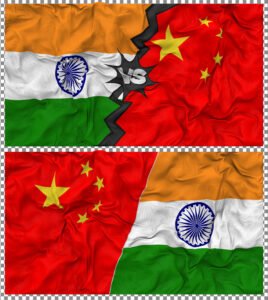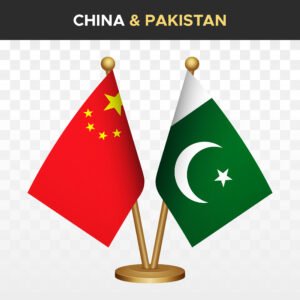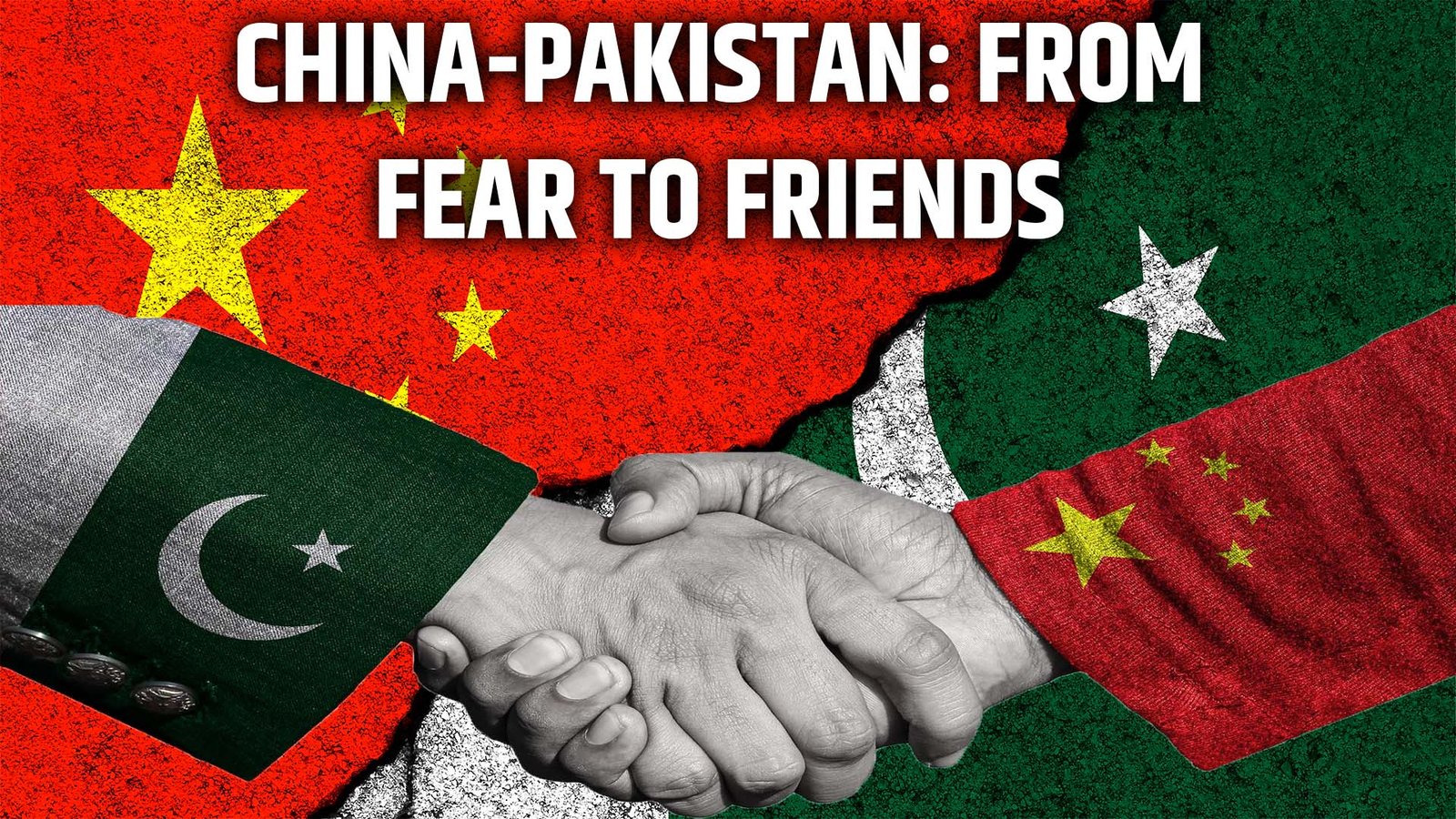Do you know the historic part of China Pakistan relations that between 1953 and 1959, China’s military repeatedly crossed into what is now Pakistan’s territory, violating the border? In September 1959, Pakistan received maps from China that wrongly marked Pakistani-controlled areas—from Mintaka Pass in Hunza to Shimshal Pass—as part of China. Pakistan’s then-President, General Ayub Khan, warned China that if these intrusions continued, Pakistan would strongly defend itself.
Meanwhile, India and China were enjoying close ties, with popular slogans like “Hindi-Chini Bhai Bhai” (Indians and Chinese are brothers) echoing from New Delhi to Beijing. Ayub Khan even proposed a joint defense alliance with India to counter potential threats from the north (China and the Soviet Union) and secure access to the Indian Ocean’s warm waters. However, India’s Prime Minister Jawaharlal Nehru rejected the offer.
Over time, the situation changed dramatically. By 2020, Pakistan had granted China access to the warm waters of Gwadar, strengthening their alliance. A Chinese General Zhang Guangkai, even declared, “Pakistan is China’s Israel,” highlighting their close partnership. So how did relations between China, India, and Pakistan shift so drastically? Let’s explore this further.
If you want to enjoy documentary on China-Pakistan relations, please click here . . .
Origin
When India was partitioned in August 1947, China was going through a civil war between the Chinese Nationalists and the Chinese Communists. On October 1, 1949, when the Communist Party of China announced the formation of its government, India established diplomatic relations with the new Chinese government shortly after, on April 1, 1950. Pakistan, however, established diplomatic relations a year later, in May 1951.
So, India became the first non-socialist country, and Pakistan became the first Muslim country to build relations with Communist China. In the beginning, India’s relations with China were very friendly, while Pakistan’s relations with China were a bit mixed — sometimes positive, sometimes not.
Even when Pakistan’s first ambassador to China, Major General Nawabzada Agha Muhammad Raza, presented his credentials to Chinese President Mao Zedong in 1951, Mao responded with a slightly sarcastic remark. He said he was happy to receive the letter of credentials sent on behalf of “the King of Great Britain, Ireland, and the British Dominions beyond the seas.”
This was probably because, by that time, Pakistan seemed to have aligned more with the Western bloc instead of communism. Also, in 1951, Pakistan was still technically a British dominion. It had no constitution yet, and officials in Pakistan still swore allegiance to the British Crown. Until 1956, even the approval of the Governor General of Pakistan came from the Queen of Britain — although this approval was mostly symbolic.
On the other hand, India had already enforced its own constitution by that time. Indian officials swore loyalty to their own country, and India was actively participating in the Non-Aligned Movement, which meant it was not siding with either the Western or Communist blocs.
After partition, Pakistan began to see India as a security threat. To counter Indian dominance in the region, Pakistan joined anti-communist military alliances: SEATO in 1954 and CENTO in 1956. In 1954, Pakistan also signed a bilateral cooperation agreement with the United States. As a result, Pakistan started receiving economic and military aid from the U.S., including military equipment.
USA Angle
At that time, the West — especially the United States — needed a strategic partner in the region to contain the Communist bloc, which included China and the Soviet Union. At the same time, Pakistan needed a powerful ally to counter India’s regional dominance. So, both countries had their own reasons and interests that brought them closer. Meanwhile, India stayed away from both the capitalist and communist blocs by following the Non-Aligned Movement.
Seeing Pakistan in the capitalist bloc, China remained quite cautious in its approach toward Pakistan. During the Korean War in the 1950s, China supported North Korea, while the United States supported South Korea. At that time, the U.S. asked Pakistan to send its military forces to fight against North Korea and China. However, Pakistan’s Prime Minister, Liaquat Ali Khan, refused because of the tense situation between India and Pakistan. Still, he offered to send 5,000 tons of wheat to support the American and South Korean forces fighting against the Chinese — even though Pakistan itself was facing food insecurity at the time.
In 1950, U.S. Secretary of State John Foster Dulles visited, and later in 1955, the Soviet Union offered India a permanent seat in the United Nations Security Council, replacing Taiwan. But Indian Prime Minister Nehru rejected the offer, saying, “No, no — this step will upset our friend Mao Zedong and damage our relations with China.” In the 1950s, India avoided accepting or lobbying for a permanent Security Council seat out of concern for maintaining good relations with China. However, later on, India faced many challenges because it did not have that seat.
Hindi-Chini Bhai Bhai
On the other hand, Nehru’s government actively tried to get China a permanent seat on the Security Council instead of Taiwan. India and China were developing very friendly relations. In 1959, when Pakistan’s President Ayub Khan met Nehru at New Delhi’s Palam Airport, Indian crowds welcomed him with loud chants of “Hindi-Chini Bhai Bhai” (Indians and Chinese are brothers).
In 1955, it was India that brought a resolution to the United Nations in support of giving China UN membership. However, the United States and its allied countries, including Pakistan, opposed the resolution, saying the issue should be considered later.
In 1950, when the People’s Liberation Army of China attacked Tibet to declare it as part of China, it was India that actually blocked the Tibetan appeal against China at the United Nations. Meanwhile, Pakistan was allowing American aircraft to use its territory for transporting weapons to Tibetan rebels fighting against China.
In 1959, Pakistan and the United States signed another defense agreement. Under this agreement, Pakistan formally allowed American forces and the CIA to use Pakistani soil to spy on the communist governments of the Soviet Union and China. As part of this, the U.S. was allowed to build a military base near Peshawar, in the Budhber area, to closely monitor the Soviets and China.
Border Disputes & Northern Threat
During the 1950s, there were territorial disputes between Pakistan and China. China claimed about 3,400 square kilometers of territory in the Pakistan-administered region of Kashmir. In September 1959, China sent border maps to Pakistan in which areas from the Mintaka Pass to Hunza and Shimshal Pass were shown as Chinese territory.
Also, since 1953, there had been reports of Chinese intrusion into Hunza, a region controlled by Pakistan. In response, Pakistan issued its own official maps claiming the area from Khunjerab Pass up to the Cis-Kuen Lun Tract as Pakistani territory.
China did not accept the McMahon Line, which had been drawn during British rule. After the British left, both India and Pakistan inherited this disputed border. China considered the area from Mintaka Pass to Shimshal Pass in Gilgit-Baltistan — which was under Pakistani control — as part of its own territory. From 1953 to 1960, the Chinese army violated this border several times.
In response, in 1960, Pakistan’s President, General Ayub Khan, warned that “Chinese intrusion will be strongly resisted.” Earlier, in October 1959, Ayub Khan wrote an article in the famous American journal Foreign Affairs, in which he proposed a “Joint Defense Union” to India, suggesting that both countries cooperate to deal with a possible Chinese push toward warm waters in the south. But Indian Prime Minister Nehru rejected the proposal and responded by saying, “Joint defense? Against whom?”
Cracking the Foundation of Bhai Bhai
However, the year 1959 also marked a turning point in Sino-Indian relations. Cracks had started appearing in the previously friendly relationship between India and China. What happened was that China, in order to strengthen its military control over Tibet, completed a 750-mile-long western military road from its Xinjiang province to Tibet. About 112 miles of this road passed through Aksai Chin, which India claimed as its own territory. This action shocked the Indian government led by Nehru. Around the same time, Tibet’s spiritual leader, the Dalai Lama, fled to India with many of his followers. The Nehru government not only gave him asylum but also allowed him to continue his spiritual authority and run the Tibetan government-in-exile from India.
Meanwhile, another development took place: ideological differences began to grow between China and the Soviet Union, and even border clashes started happening between them. From the beginning, the Soviet Union had close relations with India. In October 1959, the first skirmish occurred between India and China. In 1960, Chinese Premier Zhou Enlai proposed to India that if India accepted Aksai Chin as part of China, then China would accept the southern slopes of the eastern Himalayas as part of India. However, Nehru rejected this proposal.
As negotiations between the two countries over Tibet, disputed territories, and borders failed, bitterness increased in their behavior toward each other. Chairman Mao Zedong then ordered the Chief of General Staff of the People’s Liberation Army to launch a “fierce and painful” attack on the much weaker Indian forces. Following this, in October–November 1962, the Chinese army launched a multi-stage offensive that badly defeated Indian defenses and advanced deep into Indian territory. But after achieving their objectives, China unilaterally declared a ceasefire.
India’s defeat deeply broke Nehru, both mentally and physically. He died not long after, and his daughter Indira Gandhi blamed Zhou Enlai for her father’s sudden death. Pakistan’s position during the 1962 Sino-Indian War is partially revealed in the memoir Shahab Nama by Qudratullah Shahab, the secretary to Pakistan’s president. According to him, a Chinese student visited his house at midnight and tried to convince him that Pakistan should also attack India. But General Ayub Khan did not act on this suggestion.
1962: Paradigm Shift
After the 1962 India-China war, another paradigm shift occurred in the region. The war provided the United States an opportunity to try to bring India into its alliance. The U.S. began providing weapons to India, which upset Pakistan, a key American ally, because the U.S. had already signed a defense agreement with Pakistan. Pakistan did not want the U.S. to support India militarily.
The regional situation had become quite unusual. The United States needed India’s support to contain communism, while Pakistan needed a powerful ally against India. Initially, the U.S. was fulfilling that role for Pakistan, but now it was leaning toward India. In response, Pakistan needed another credible ally. On the other hand, China, after worsening relations with the Soviet Union and India, was not in a position to risk tensions with another neighbor. India also needed a strong ally against China.
In this situation, a new paradigm shift took place in the region, and alliances began to change. Pakistan’s young Foreign Minister at the time, Zulfikar Ali Bhutto, played a proactive role in this changing scenario. Observing the Sino-Indian war and America’s behavior, he not only convinced Ayub Khan’s government to move closer to China but also quietly visited Beijing in March 1963 with a delegation right after the war. There, he settled the border disputes with China and signed an agreement. According to the agreement, both countries accepted a permanent borderline from Shimshal Pass to Khunjerab Pass and Mintaka Pass.
The Era of Friendship
On 2 March 1963, at the final signing ceremony, when Pakistan and China’s foreign ministers—Zulfikar Ali Bhutto and Marshal Chen Yi—signed the agreement, Chinese President Liu Shaoqi and Premier Zhou Enlai were standing behind them in support. Bhutto also convinced Ayub Khan to send a signal at the international level that the Sino-Indian border dispute was now “India’s problem.”
After that, the foreign ministries of Pakistan and China put their relations into high gear. The Americans were unhappy with Bhutto’s pro-China foreign policy and even complained to Ayub Khan. However, Ayub was already upset with America’s behavior. In 1964, he expressed his displeasure by writing an article in Foreign Affairs magazine about the U.S.’s friendship and betrayal. Later, in his book Friends Not Masters, he also strongly criticized American disloyalty.
China gradually distanced itself from India and started moving closer to Pakistan, even though the two countries had completely different political ideologies and military cultures. In the 1960s, the top brass of the Pakistani military was mostly trained in Sandhurst and followed British imperial doctrines and political ideas. On the other hand, China’s People’s Liberation Army and even its political leaders came from backgrounds rooted in the Long March, guerrilla warfare, and Leninist or leftist education.
In this situation, one party followed communist ideology while the other followed imperialist ideas. It was difficult for both to come close to each other and later be known as “all-weather friends.” However, their individual needs and interests gradually brought them closer, to the point where they became dependent on each other. Soon, their friendship was described as:
“Higher than the Himalayas, deeper than the ocean, sweeter than honey, and stronger than steel.”
From the 1950s to the 1960s, although there were some differences between Pakistan and China, overall, their relations remained friendly. In 1955, Chinese Vice President Madam Song Ching Ling visited Pakistan—this was the first high-level visit from China. Then in 1956, Pakistani Prime Minister H.S. Suhrawardy visited China, marking the first high-level Pakistani visit to Beijing. In 1966, both countries started work on the Karakoram Highway, a strategically important project for both sides.
Pakistan played a key role in connecting China with the outside world and helping it establish diplomatic relations. In 1971, Pakistan played a historic role by secretly arranging a visit for U.S. Secretary of State Henry Kissinger to China, which helped normalize Sino-American relations. Pakistan also helped establish dramatic diplomatic relations between China and the Middle East’s key player—Saudi Arabia. Saudi Arabia eventually recognized China at the international level in 1990.
In the 1980s, Saudi Arabia needed intermediate-range missiles for its security. But due to pressure from Washington—its old ally—and its alignment with Israel, Saudi Arabia was not allowed to make such deals openly. At that point, Pakistan guided the Saudis toward China. Not only did Saudi Arabia get the missiles from China, but this move also deepened the friendship between Saudi Arabia and China in the years to come.
Strategic Partner
Over time, Pakistan and China expanded cooperation in every sector: from vetoing resolutions against Pakistan at the UN, to military hardware development, nuclear cooperation, trade, and infrastructure. In 2014, the two countries launched the historic China-Pakistan Economic Corridor (CPEC)—a project initially worth $45 billion. This massive initiative included multiple sub-projects like roads, factories, power plants, communications, and even the strategic development of the Gwadar Port on the Indian Ocean, which China has leased.
Because of its relations with China, Pakistan gained more flexibility in maneuvering on the international stage. According to Andrew Small, who authored a research-based book on China-Pakistan relations, when Americans complained to the Chinese that their unconditional support had made Pakistan so stubborn that it listened to no one, a general from the People’s Liberation Army, Zhang Quang Kai, replied, “Pakistan is China’s Israel.”
Meanwhile, relations between India and China are still strained due to unresolved border issues. Ironically, the same warm-water ports that China was once prevented from accessing—when Pakistan and India were working together in a joint defense effort—are now being developed in partnership with Pakistan. Today, Pakistan is actively helping China gain access to these warm waters through projects like Gwadar Port and other sea-based developments.
Why is this happening? Because in international relations, there are no permanent friends or permanent enemies—only permanent interests.
What are your thoughts on the historic trilateral relations between China, India, and Pakistan? Let us know in the comments below.
Thank you!
If you want to read about Imam Khomeini’s last day, please click here . . .

